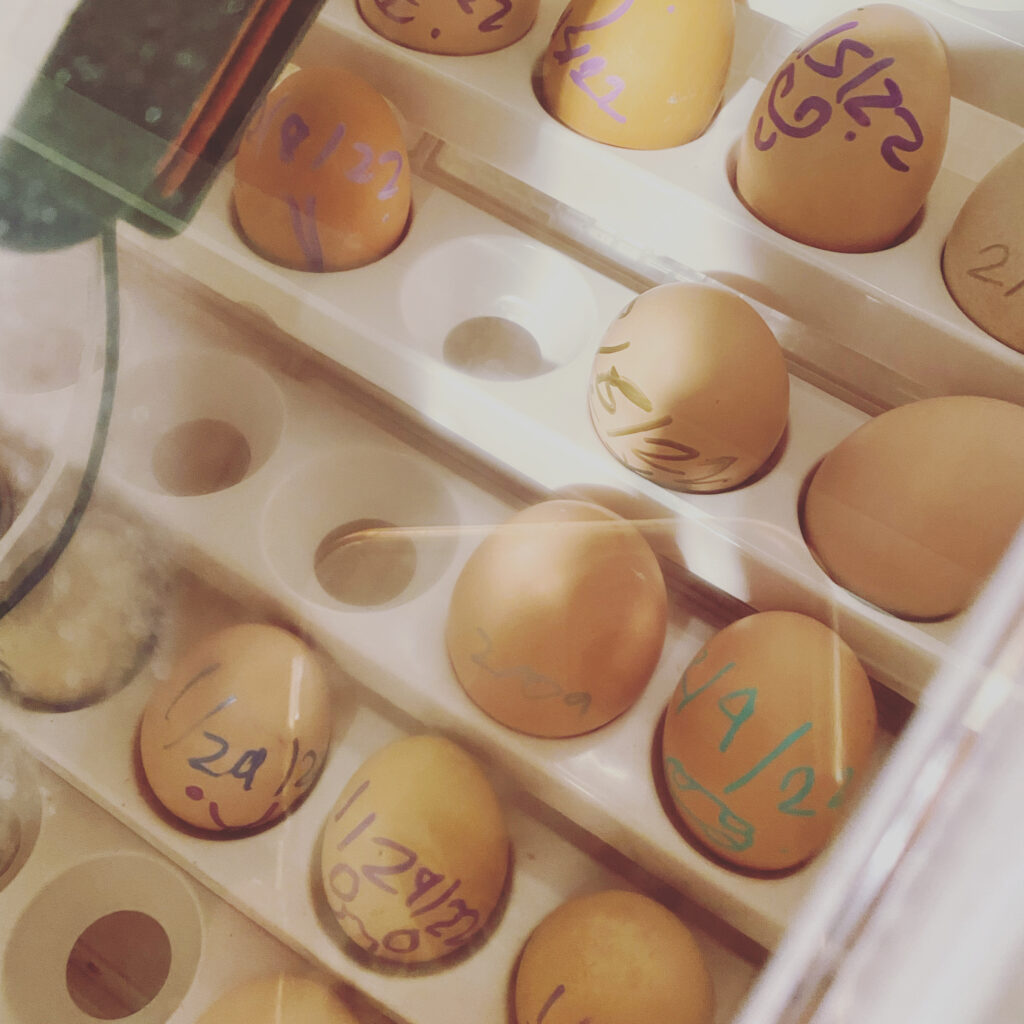The Beginning of Our Journey
It all began with a trip to Tractor Supply, where we picked up baby ducks, chickens, and turkens. Armed with a puppy playpen and a red-light heating lamp from our previous experience with baby ducks, we were ready to embark on this new venture. The excitement was overwhelming as we settled them into their temporary home.
We turned our once rabbit sanctuary (10×10 dog run) into our Starter Chicken Coop. We invested in a starter incubator from Tractor Supply, a $160 Farm Innovators 41-Egg Capacity Pro Series Circulated Air Incubator with Automatic Egg Turner, and later upgraded to a $2,000 CIMUKA EGG HB series incubator from Hatching Time, which can hold 200 eggs and hatch them. We also cleaned out the overgrown pond and prepped it for our future free-range duck sanctuary. Not to mention the countless trips to Tractor Supply for chicken scratch, crumble, electrolyte powder, feeders, and water containers. The time and money spent on building what my husband and I designed took a significant portion of our savings from turning an old Morgan building into a chicken coop, creating a protective chicken run, cleaning out the overgrown forest behind the new chicken coop, ordering supplies for fencing, and moving railroad ties.
From the beginning, we established a routine of checking on our little ones, cleaning their space, refilling their food and water, and eagerly waiting for some of our baby chicks to start hatching. We even learned about “pasty butts” and the importance of adding electrolytes to their water to keep them healthy. Watching them grow was a joy, and we looked forward to each new step in our farming journey.
Growing the Flock
Once our chicks, ducks, turkens, and guineas were older, we moved them to the chicken coop outside. Teaching them to free-range during the day and return to the coop at night was an adventure in itself! Thanks to a local hatchery, we expanded our flock, adding more birds and creating a vibrant community of feathered friends.
I spotted a flyer at the local feed store for a rooster needing to be rehomed, and we named him Hey Hey Maui Kyle. An old-school farming rule is not to name your flock, but we named each and every one of our feathered babies—except for the ducks, as there were too many to keep track of, especially being free-range. We even held funerals and shed tears for the birds taken by nature.
We successfully hatched a few of our chicks. We started with the egg incubator on our kitchen counter, then created a space for them in the laundry room and the garage to let them grow. Once they started to fly up to the top of the dog play pen, we knew it was time they needed a larger space.

Through our learning experiences, we experimented with different bedding materials: pine shavings, straw, leaves, sand, and even fake grass turf. To keep our birds comfortable, we added misters for the summer, portable heaters, and extra red light lamps for the winter. There were many discussions about who was responsible for which chores, and frustrations arose regarding the consistency of help in cleaning the coop. Eventually, tasks like ensuring clean water and filling food containers became part of our routine.
Our goal was clear: we wanted to incubate eggs and sell chickens. To make this happen, we followed Texas Animal Health Commission guidelines, underwent PT testing, and registered for an exotic farm license since we planned to welcome peacocks into our family.
Soon after acquiring our peacocks, we noticed that one of them, Kevin, “the colorful one,” seemed to be lying down more often. The local farmer who helped us get started advised us to give him vitamins and a small dose of antibiotics, which we hoped would help him bounce back.
New Experiences and Adventures
We also ventured to two farm auctions—one to acquire more birds and another to sell our overflow of roosters. It was exciting to learn about local farm auctions. I’ve never been an official participant in a barn auction before, and my husband just watched and smiled as I begged him to bid on a bird I desperately wanted.
One of the highlights was when my husband ordered 50 baby chicks, including turkeys. Picking them up from the post office was a delightful experience, listening to their little chirps all the way home.
We would introduce any and all new flock members and carefully select their names. I spent hours feeding them treats while enjoying the sounds of our roosters and peacock calls. Our farm grew from 12 to 150. Chicken math is real!!!
Looking back, we were blissfully unaware of beginner farmers’ mistakes and did not fully understand the challenges ahead. But with each new day, we’ve embraced the learning curve and the joy of raising our flock.